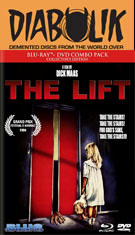
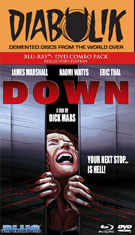
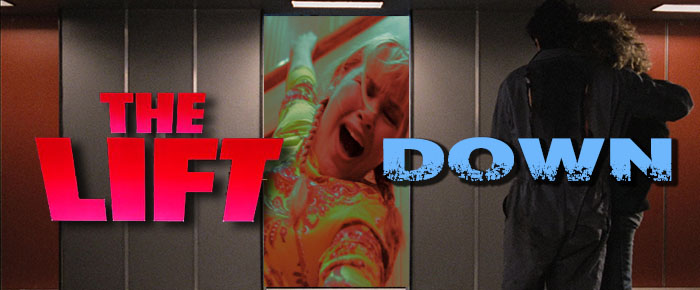
THE LIFT
Color, 1983, 98 mins. 44 secs.
Directed by Dick Maas
Starring Huub Stapel, Willeke van Ammelrooy, Josine van Dalsum, Johan Hobo
Blue Underground (Blu-ray & DVD) (US R0 HD/NTSC) / WS (1.66:1) (16:9), Warner Bros (DVD) (France R2 PAL)
DOWN
Color, 2001, 111 mins. 29 secs.
Directed by Dick Maas
Starring James Marshall, Naomi Watts, Eric Thal
Blue Underground (Blu-ray & DVD) (US R0 HD/NTSC) / WS (2.35:1) (16:9), Artisan (DVD) (US R1 NTSC)
You 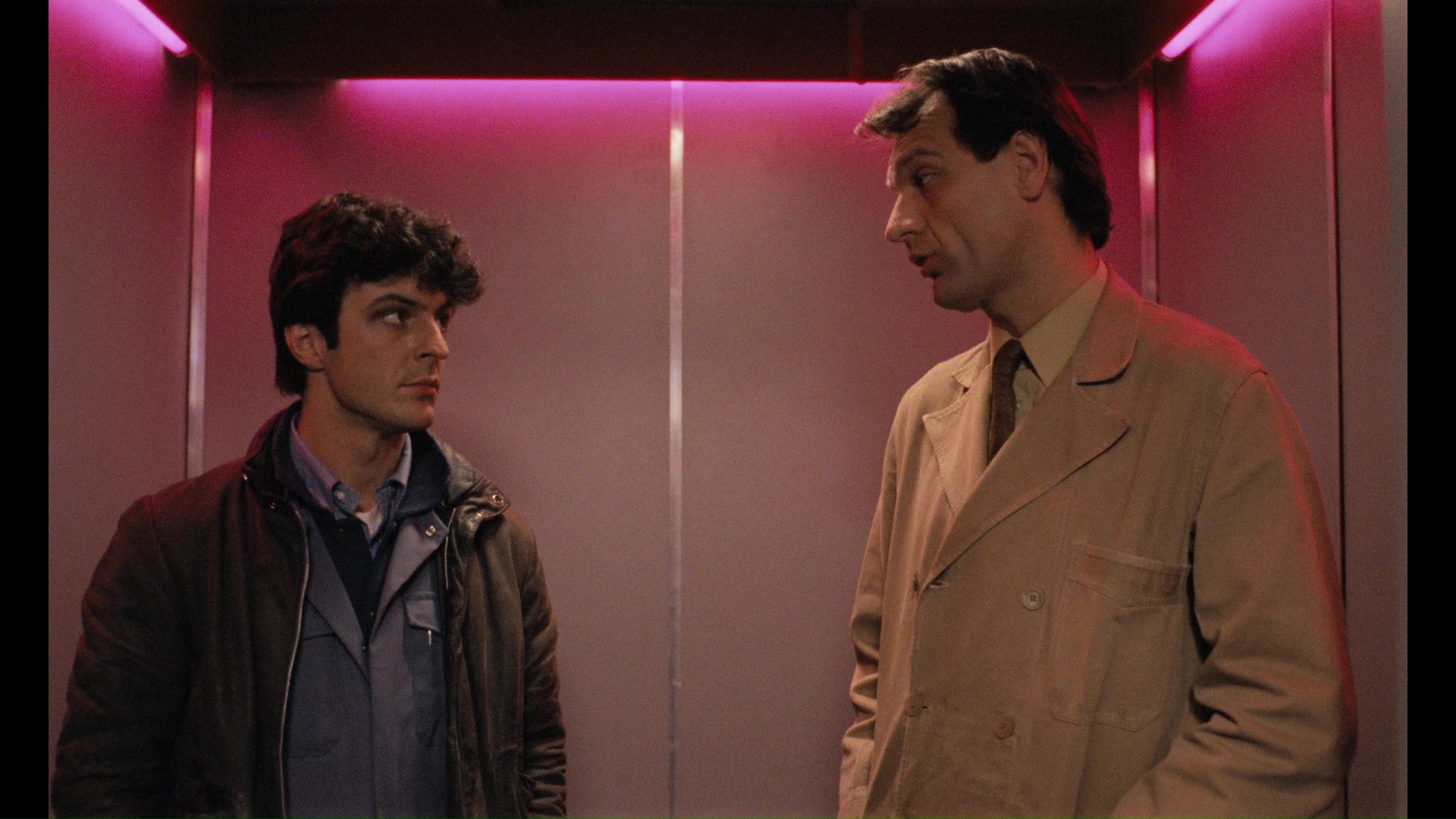 can probably count on your
can probably count on your 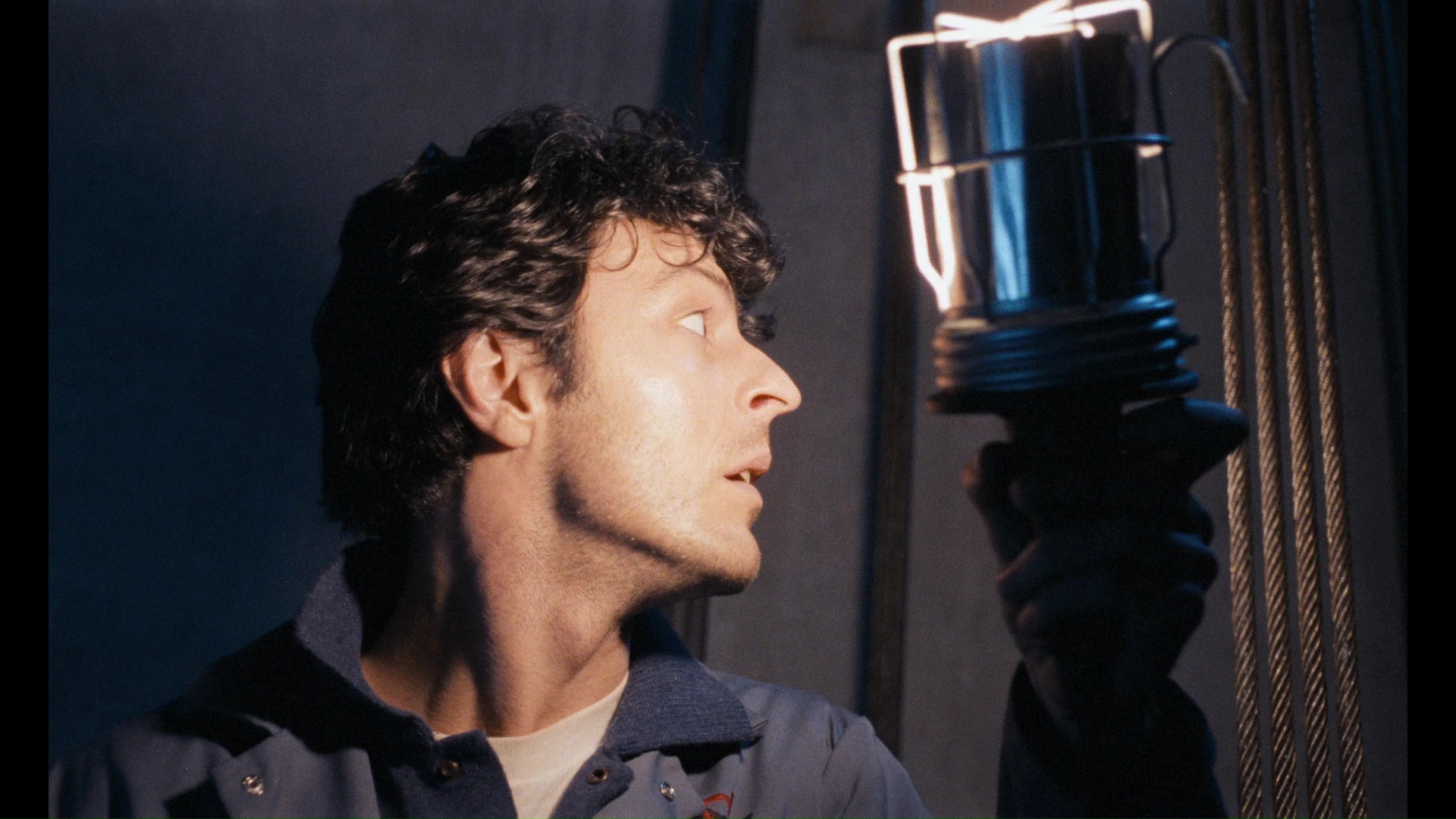 fingers and toes the number of commercially released Dutch horror movies out there, and the first one almost every horror fan ever saw is still the most famous: The Lift, an intentionally absurd but stylish tale about a killer elevator. Yes, that's completely stupid, but the film somehow makes it work – and more importantly, it inspired one of the greatest taglines in movie history: “Take the stairs, take the stairs, for God’s sake, take the stairs!”
fingers and toes the number of commercially released Dutch horror movies out there, and the first one almost every horror fan ever saw is still the most famous: The Lift, an intentionally absurd but stylish tale about a killer elevator. Yes, that's completely stupid, but the film somehow makes it work – and more importantly, it inspired one of the greatest taglines in movie history: “Take the stairs, take the stairs, for God’s sake, take the stairs!”
Shot on a very, very low budget, the film turned out to be a big calling card for its fledgling director, Dick Maas, and star Huub Stapel, who would go on to work together on the much more ambitious Amsterdamned, the fun yuletide horror film Saint, and the Flodder comedy series. Here Stapel is cast as Felix, an elevator repairman who suspects something is up in a modern office building when an elevator nearly suffocates some passengers to death, sends a blind man to his death down an open shaft, and lops off a security guard’s head. The spate of deaths also piques the interest of Mieke (Antonia’s Line’s van Ammelrooy), a reporter for a low-end tabloid newspaper, and together they begin to pry into the dark secrets of the computer company behind the elevator’s cutting-edge technology. Felix’s own domestic life starts to fall apart as he digs deeper into the mystery and ultimately comes face to 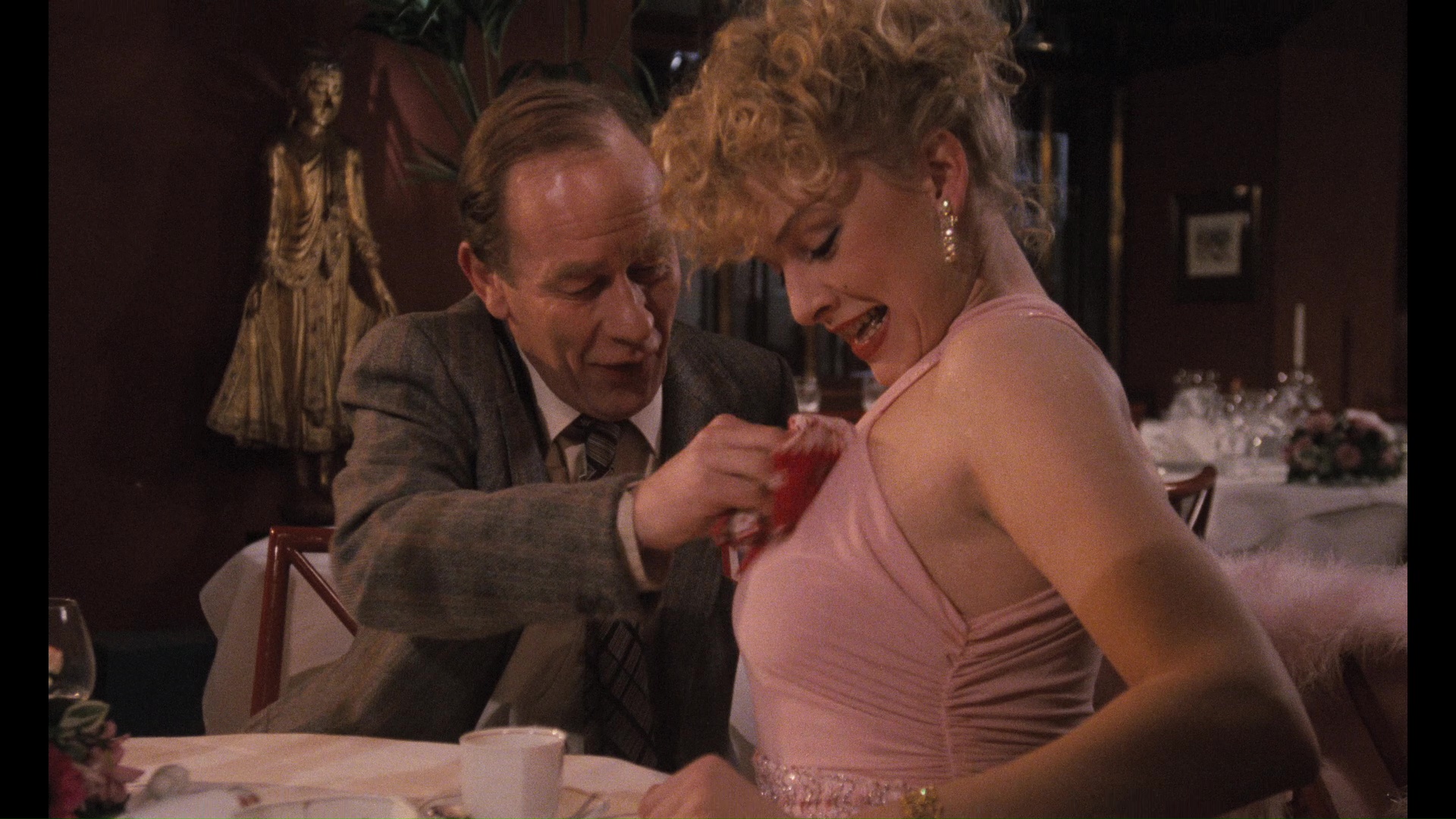 face with a new kind of horrific villain.
face with a new kind of horrific villain.
A crafty, efficient thriller with a striking 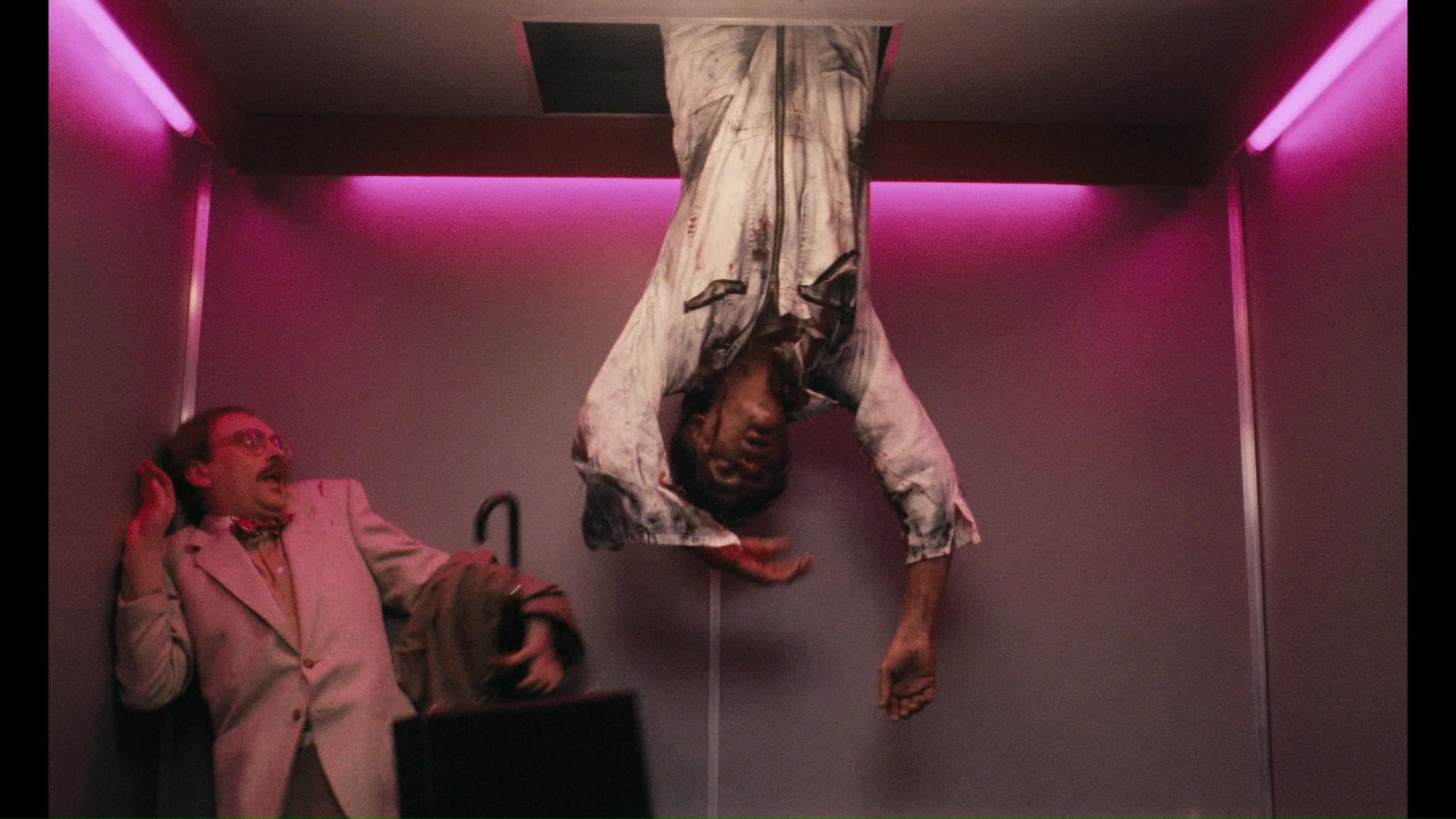 look largely inspired by the growing music video trend, The Lift made a strong impression on international distributors when it first popped up and became a huge hit in its native country. Even the dubbed VHS from Media that seemed to turn up in every single video store in America for the entire decade was a good way to make this film's acquaintance, though American distributor Island Alive also prepped a subtitled version that few were lucky enough to actually see.
look largely inspired by the growing music video trend, The Lift made a strong impression on international distributors when it first popped up and became a huge hit in its native country. Even the dubbed VHS from Media that seemed to turn up in every single video store in America for the entire decade was a good way to make this film's acquaintance, though American distributor Island Alive also prepped a subtitled version that few were lucky enough to actually see.
For some reason the film then dropped out of sight for decades, without an official American release of any kind until Blue Underground finally brought it back in circulation in 2017. The Blu-ray and DVD dual-format set obviously handles those intense, neon-washed colors a lot better than VHS, and the new HD master is visually satisfying and natural with far more detail evident throughout. (A French DVD was also released with the English dub included, but 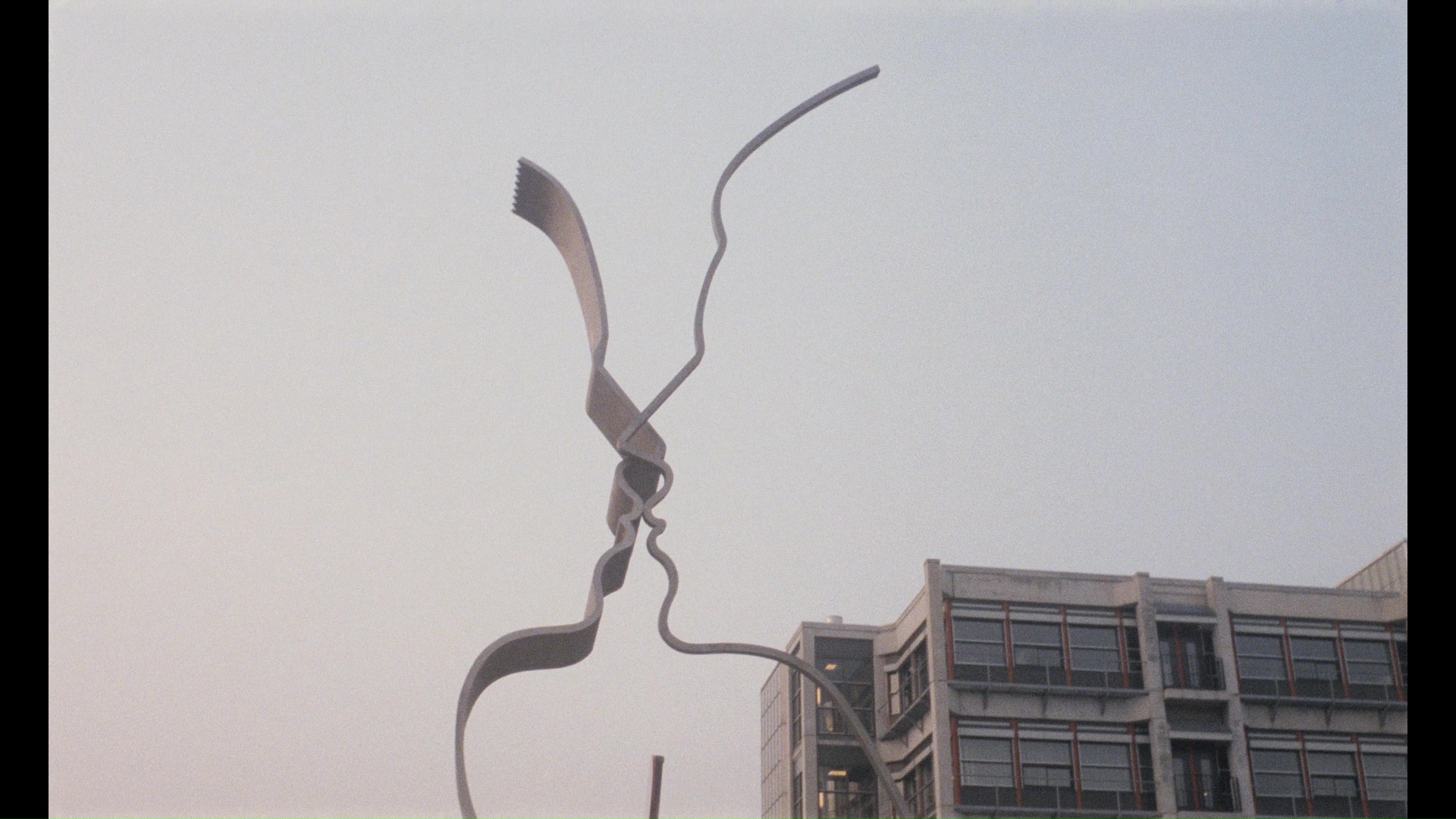 this edition is much better.) Audio options include an amusingly manipulative DTS-HD MA 5.1 Dutch track or Dolby Digital 2.0 Dutch or English tracks, with optional yellow English SDH or Spanish subtitles. In what amounts to a companion piece to the earlier commentary track on Amsterdamned with Maas and editor Hans van Dongen, both men return for an English-language, David Gregory-moderated dissection of how this film came about, the threadbare financing available
this edition is much better.) Audio options include an amusingly manipulative DTS-HD MA 5.1 Dutch track or Dolby Digital 2.0 Dutch or English tracks, with optional yellow English SDH or Spanish subtitles. In what amounts to a companion piece to the earlier commentary track on Amsterdamned with Maas and editor Hans van Dongen, both men return for an English-language, David Gregory-moderated dissection of how this film came about, the threadbare financing available 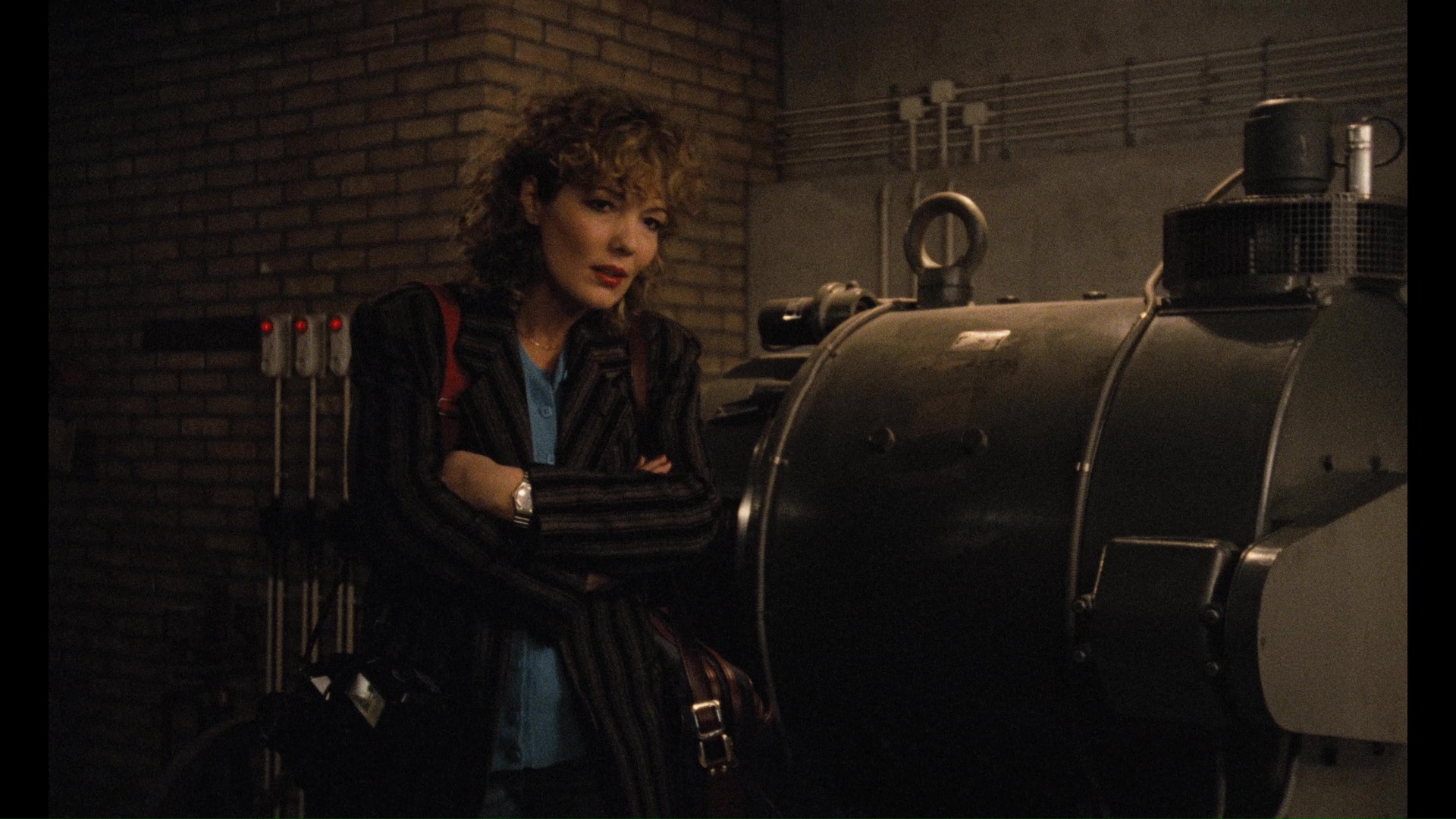 (which required the director to crank out the music score himself in record time), the creation of the stylized lighting scheme, and the lack of Dutch leading men at the time. Speaking of which, in "Going Up" (9m9s), Stapel chats on a boat (in the same interview session from his Amsterdamned appearance) about his early acting career leading to this film including a Dutch stage production of Harold and Maude(!), the audition process, and his adjustment to Maas' directing process, including the technical challenges of the memorable final death during the climax. A quick 2004 short film by Maas, "Long Distance" (4m13s), is an obvious but effective little Twilight Zone-style vignette about a little girl getting an afternoon call from her dad on his way home, and the disc is rounded out with the Dutch and American theatrical trailers and a gallery of posters and stills. The packaging also features an insert with a liner notes essay by Chris Alexander about the film's placement within the role of haunted inanimate objects (hello, Christine), the casual cheerfulness of its brief bits of sexuality, and its echoes of John Carpenter.
(which required the director to crank out the music score himself in record time), the creation of the stylized lighting scheme, and the lack of Dutch leading men at the time. Speaking of which, in "Going Up" (9m9s), Stapel chats on a boat (in the same interview session from his Amsterdamned appearance) about his early acting career leading to this film including a Dutch stage production of Harold and Maude(!), the audition process, and his adjustment to Maas' directing process, including the technical challenges of the memorable final death during the climax. A quick 2004 short film by Maas, "Long Distance" (4m13s), is an obvious but effective little Twilight Zone-style vignette about a little girl getting an afternoon call from her dad on his way home, and the disc is rounded out with the Dutch and American theatrical trailers and a gallery of posters and stills. The packaging also features an insert with a liner notes essay by Chris Alexander about the film's placement within the role of haunted inanimate objects (hello, Christine), the casual cheerfulness of its brief bits of sexuality, and its echoes of John Carpenter.
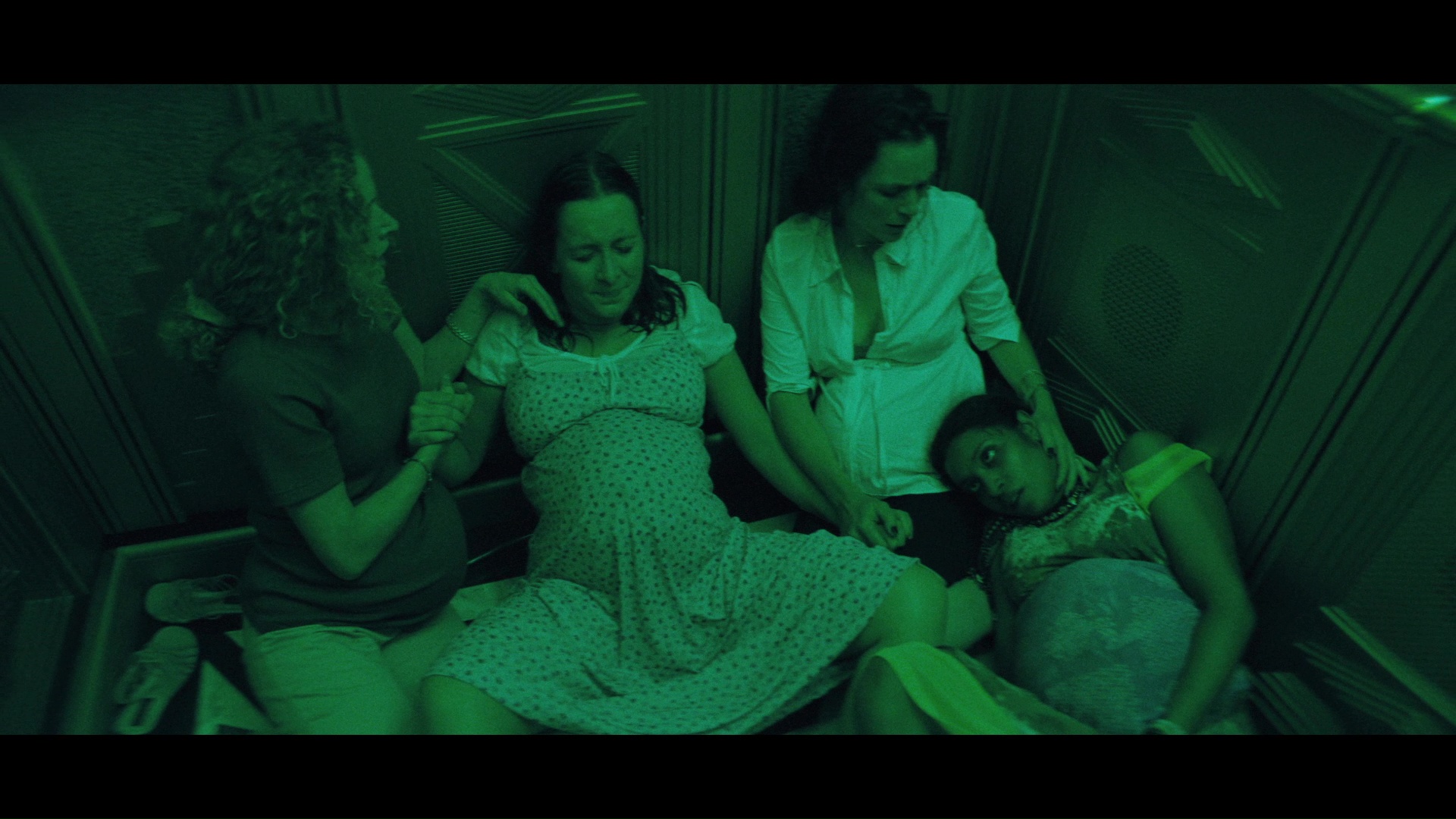 Almost two decades later, Maas was given the opportunity to remake his most famous horror film with an
Almost two decades later, Maas was given the opportunity to remake his most famous horror film with an 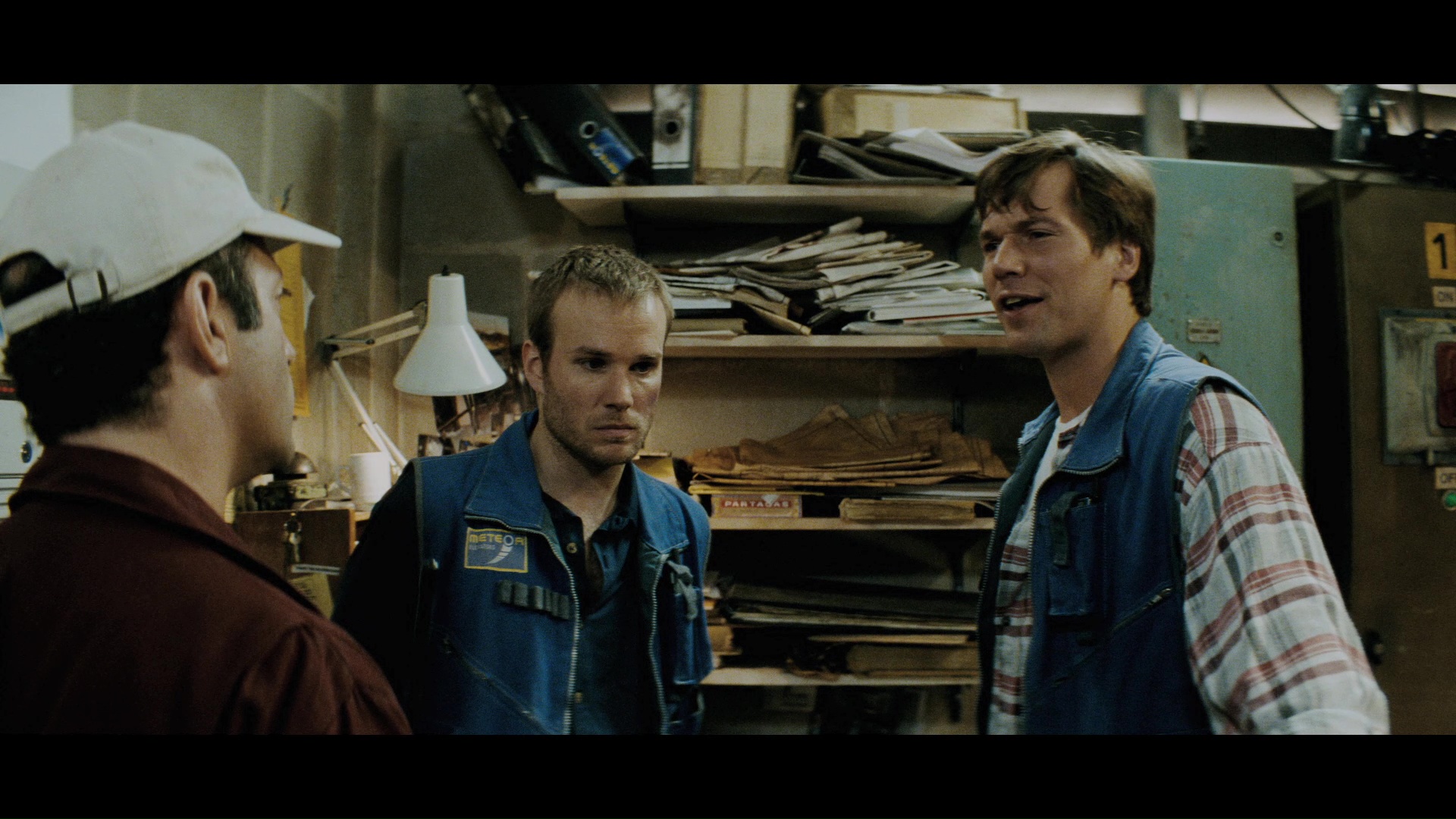 American cast. Originally titled Down, the film was renamed The Shaft for its direct-to-video release in the United States – a title that carries some pretty unfortunate associations in more ways than one. To add insult to injury, the scope film was only given a brutal pan-and-scan 1.33:1 transfer by Artisan, a notoriously lazy company when it came to Euro horror (with Dario Argento’s Sleepless faring just as poorly). Fortunately, that original name has been reinstated for the Blue Underground release, also a Blu-ray and DVD combo with its own slate of substantial extras.
American cast. Originally titled Down, the film was renamed The Shaft for its direct-to-video release in the United States – a title that carries some pretty unfortunate associations in more ways than one. To add insult to injury, the scope film was only given a brutal pan-and-scan 1.33:1 transfer by Artisan, a notoriously lazy company when it came to Euro horror (with Dario Argento’s Sleepless faring just as poorly). Fortunately, that original name has been reinstated for the Blue Underground release, also a Blu-ray and DVD combo with its own slate of substantial extras.
The plot here is pretty much the same, though the execution and difference in eras gives it a very different feeling. Two actors with strong David Lynch associations take the leads here, with James Marshall (who played James Hurley in every incarnation of Twin Peaks) cast as the main elevator technician, Mark (who’s unmarried this time). Again we have a homicidal threat knocking off people within the shiny, towering Millennium office building, including a decapitation, a doggie death, and a projectile rollerblader. Naomi Watts, who had just had her big break in Mulholland Drive and would also appear in the revived Twin Peaks, gets the reporter role here, this time named Jennifer, with an expanded third role added for another technician, Jeff (The Puppet Masters’ Thal). Some new mayhem has been added as well, most notably a pretty spectacular scene with a carload of elevator passengers finding the floor beneath them suddenly dropping out. It's a wild set piece with a fun ‘70s disaster movie vibe that makes this one worth checking out on its terms. 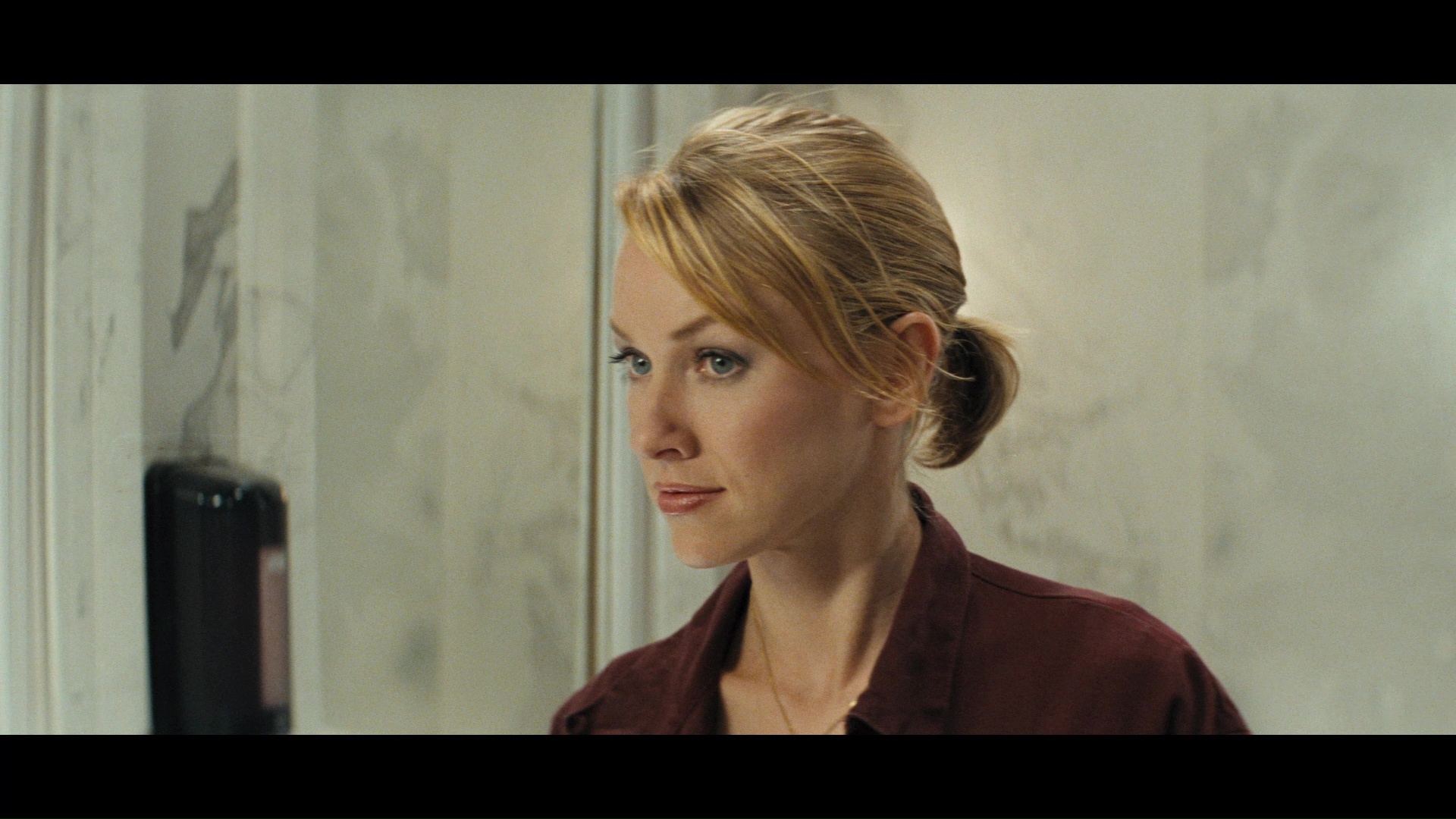
Far more 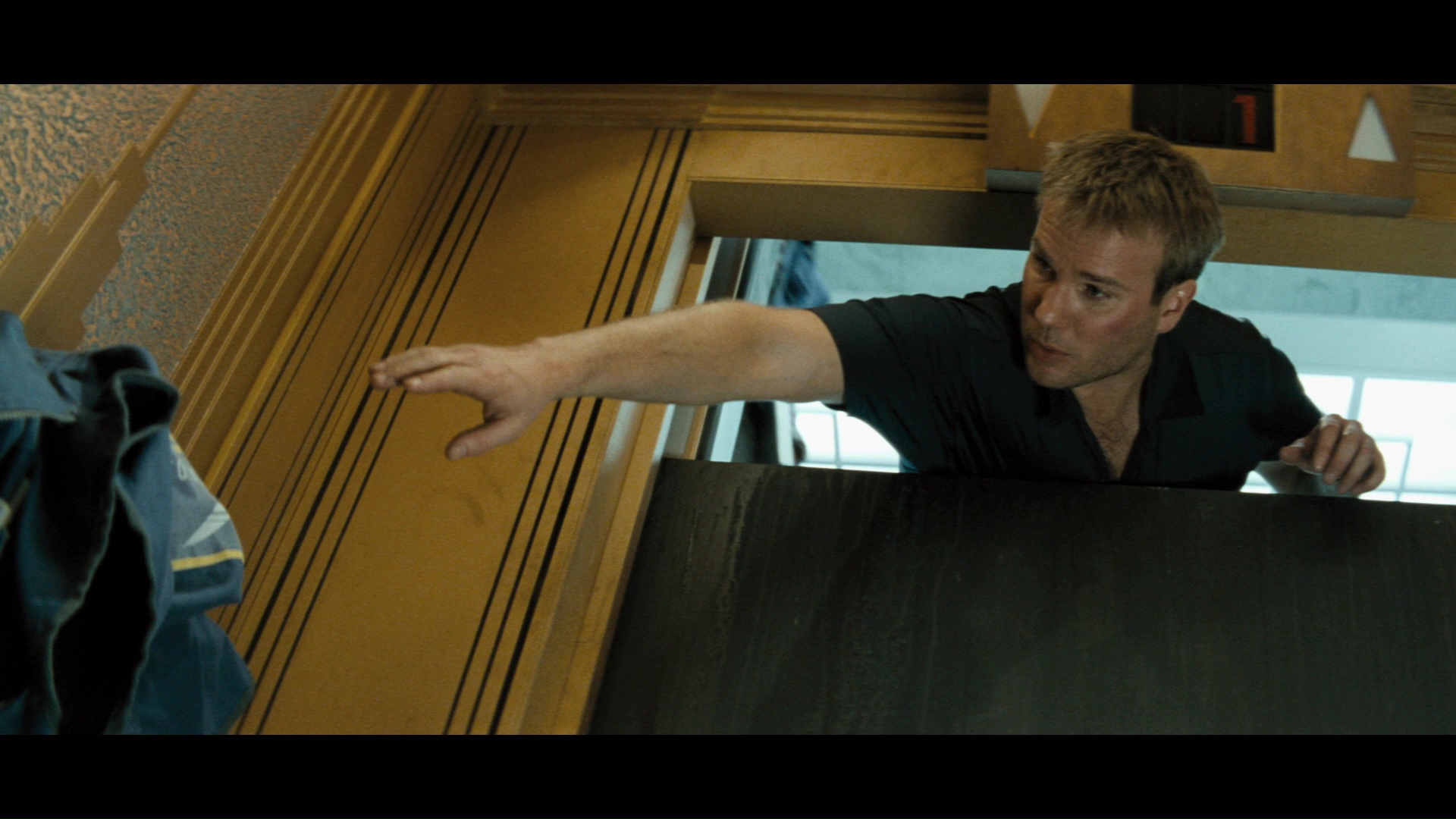 slick, bombastic, and potty-mouthed than the original version, this one also ups the ante by expanding the scope to multiple elevators and beefing up the climax with a lot more action and more special effects. More notably, it sports a fun supporting cast of character actors including an Alien: Resurrection reunion for Dan Heday and Ron Perlman, plus the late and much-missed Edward Herrmann and a juicy role for the always entertaining Michael Ironside as a pivotal force behind the rampaging conveyance devices. Unfortunately, the film took on a very different meaning a month after it opened in Dutch theaters in 2001 when the September 11 attacks gave its shots of the World Trade Center, frequent references to terrorism, and startling nod to Osama Bin Laden a lot more weight than a frivolous little horror film like this could possibly bear. As a result, it didn’t get much circulation elsewhere for almost two years, by which point it was stuck with some lousy cover art featuring Watts and a creepy kid clearly meant to cash in on her role in another remake, The Ring.
slick, bombastic, and potty-mouthed than the original version, this one also ups the ante by expanding the scope to multiple elevators and beefing up the climax with a lot more action and more special effects. More notably, it sports a fun supporting cast of character actors including an Alien: Resurrection reunion for Dan Heday and Ron Perlman, plus the late and much-missed Edward Herrmann and a juicy role for the always entertaining Michael Ironside as a pivotal force behind the rampaging conveyance devices. Unfortunately, the film took on a very different meaning a month after it opened in Dutch theaters in 2001 when the September 11 attacks gave its shots of the World Trade Center, frequent references to terrorism, and startling nod to Osama Bin Laden a lot more weight than a frivolous little horror film like this could possibly bear. As a result, it didn’t get much circulation elsewhere for almost two years, by which point it was stuck with some lousy cover art featuring Watts and a creepy kid clearly meant to cash in on her role in another remake, The Ring.
The Blue Underground release finally gives this film a chance to be seen in a respectable presentation, which wouldn’t be too hard given how lousy it’s looked in the past. The original wide compositions have been reinstated here and look so, so much better; the film has a soft, muted look with a reliance on earth tones that's a far cry from the vibrant appearance of the Dutch film. Grain and tactile textures are in short supply here, but it’s still a massive, gratifying leap over anything we’ve had before. Again you get a DTS-HD MA 5.1 option (for the original English track), plus Dolby Digital stereo choices in English or French with optional English SDH or Spanish subtitles. The surround effects here are a lot of fun when they really kick in, especially during that aforementioned floor-dropping scene. 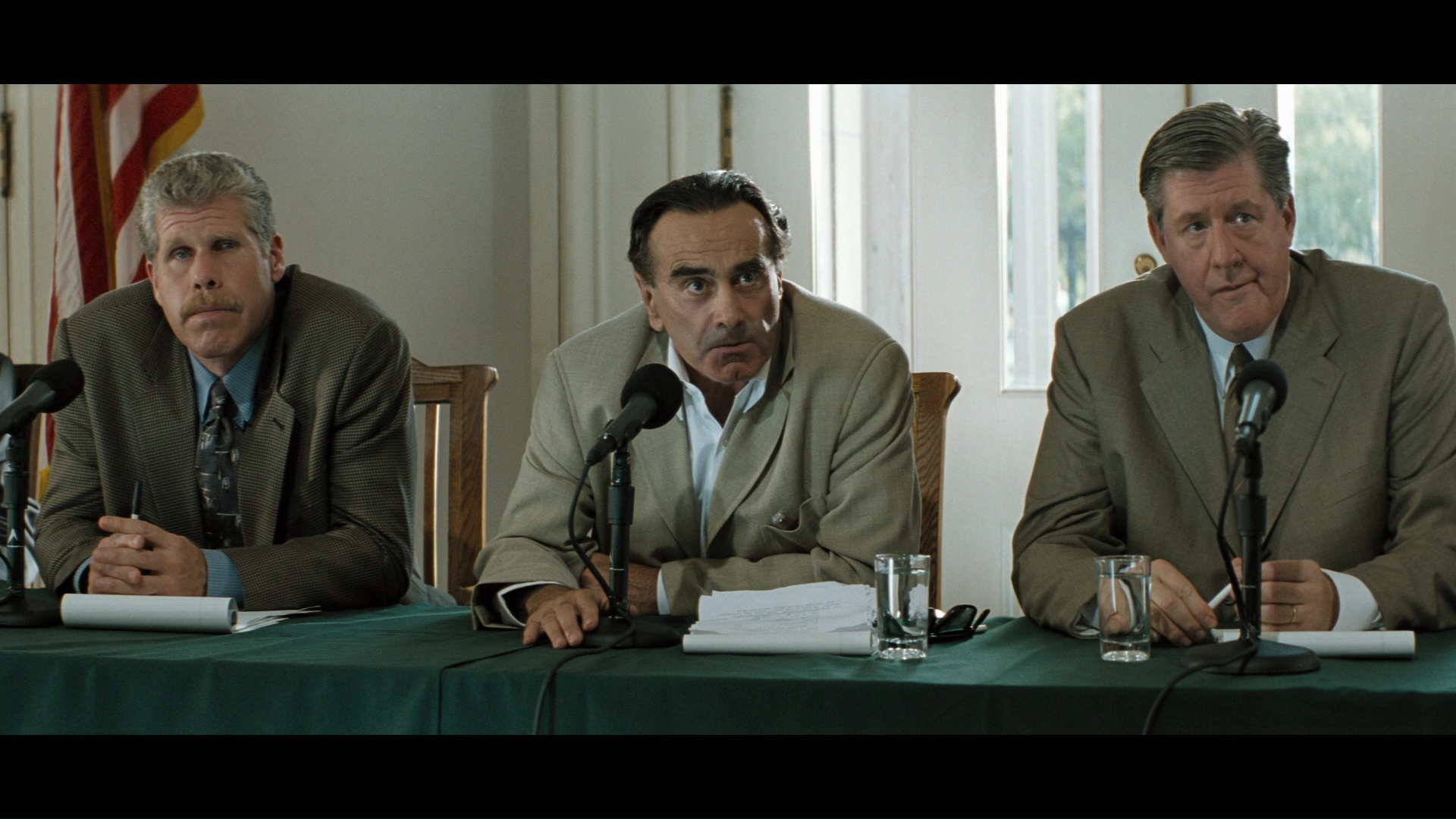 (The jokey use of a certain Aerosmith hit is less impressive creatively, but it sounds fine as well.) Mass returns for another lively commentary with Gregory, this time with stunt coordinator Willem de Beukelaer; this time
(The jokey use of a certain Aerosmith hit is less impressive creatively, but it sounds fine as well.) Mass returns for another lively commentary with Gregory, this time with stunt coordinator Willem de Beukelaer; this time 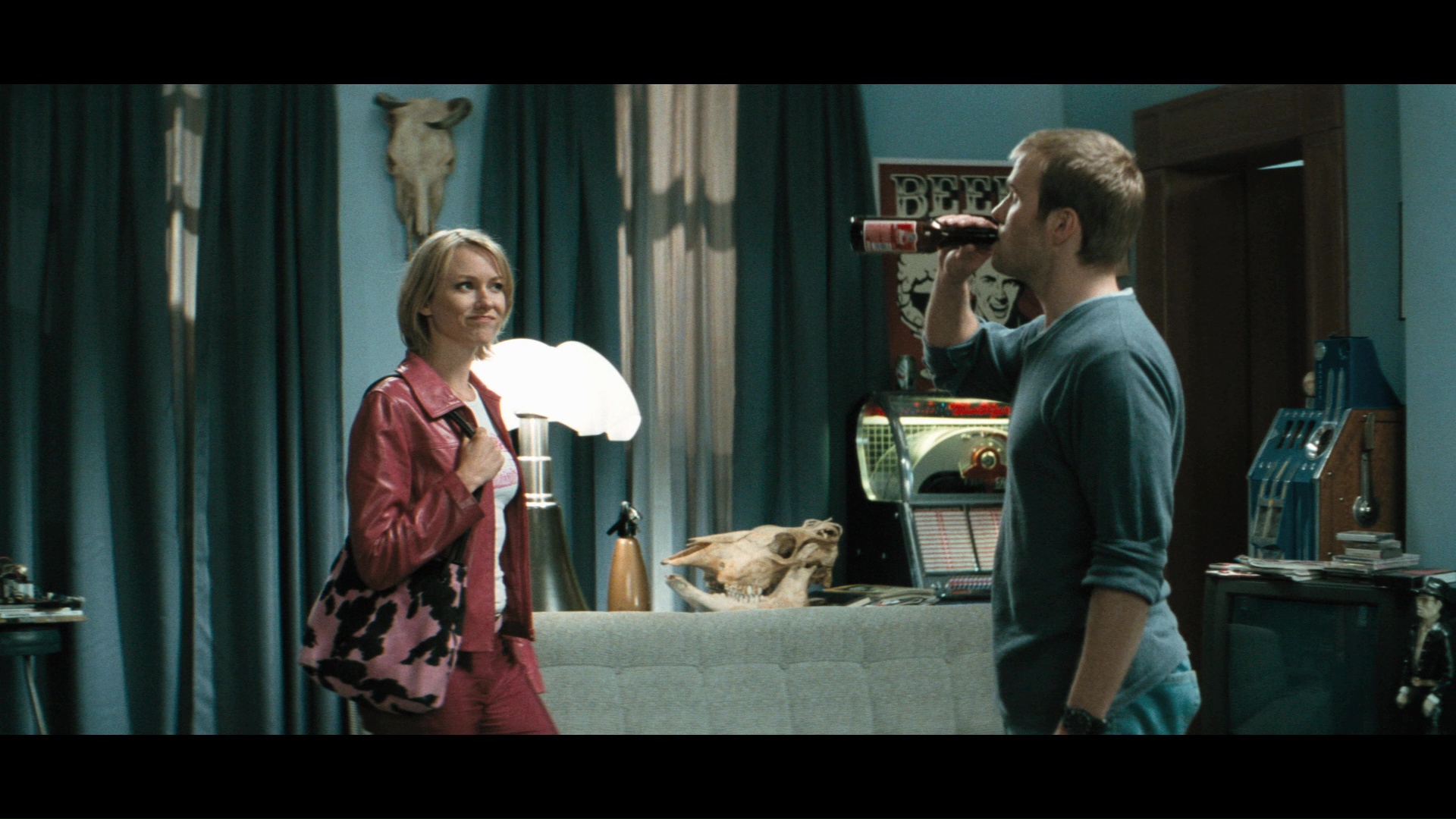 they talk about the primarily Dutch-based shoot, the changes he decided to make over the years he tinkered with the idea of remaking his original hit, the lack of an original score by Maas (a rarity), the large amount of aerial shots, the real-life circumstances that hurt the film's fate at the time, and the grueling process of doing that floor scene involving extensive stunt people and effects work. "The Making of Down" (9m25s) is an archival look at the film's effects sequences (including some amusing computer storyboarding and effects scenes that show how far we've come since then), and included only on the Blu-ray is an avalanche of raw production footage (141m25s -- yes, that's the correct running time!) featuring a ton of great vintage New York location footage, both street level and aerial -- plus Naomi Watts at work and some really cute puppies. Also included are the theatrical trailer, two teasers, and a poster and still gallery, plus a liner notes booklet by Michael Gingold detailing the film's differences from its source, its placement in the minor wave of Euro horror remakes in the '90s and '00s, and the chill factor involved now in its New York setting and historical circumstances. The reversible cover art features the Shaft design as an option, though it's hard to imagine too many people opting to have that facing out on their shelves.
they talk about the primarily Dutch-based shoot, the changes he decided to make over the years he tinkered with the idea of remaking his original hit, the lack of an original score by Maas (a rarity), the large amount of aerial shots, the real-life circumstances that hurt the film's fate at the time, and the grueling process of doing that floor scene involving extensive stunt people and effects work. "The Making of Down" (9m25s) is an archival look at the film's effects sequences (including some amusing computer storyboarding and effects scenes that show how far we've come since then), and included only on the Blu-ray is an avalanche of raw production footage (141m25s -- yes, that's the correct running time!) featuring a ton of great vintage New York location footage, both street level and aerial -- plus Naomi Watts at work and some really cute puppies. Also included are the theatrical trailer, two teasers, and a poster and still gallery, plus a liner notes booklet by Michael Gingold detailing the film's differences from its source, its placement in the minor wave of Euro horror remakes in the '90s and '00s, and the chill factor involved now in its New York setting and historical circumstances. The reversible cover art features the Shaft design as an option, though it's hard to imagine too many people opting to have that facing out on their shelves.
Reviewed on October 18, 2017.




 can probably count on your
can probably count on your  fingers and toes the number of commercially released Dutch horror movies out there, and the first one almost every horror fan ever saw is still the most famous: The Lift, an intentionally absurd but stylish tale about a killer elevator. Yes, that's completely stupid, but the film somehow makes it work – and more importantly, it inspired one of the greatest taglines in movie history: “Take the stairs, take the stairs, for God’s sake, take the stairs!”
fingers and toes the number of commercially released Dutch horror movies out there, and the first one almost every horror fan ever saw is still the most famous: The Lift, an intentionally absurd but stylish tale about a killer elevator. Yes, that's completely stupid, but the film somehow makes it work – and more importantly, it inspired one of the greatest taglines in movie history: “Take the stairs, take the stairs, for God’s sake, take the stairs!”  face with a new kind of horrific villain.
face with a new kind of horrific villain. look largely inspired by the growing music video trend, The Lift made a strong impression on international distributors when it first popped up and became a huge hit in its native country. Even the dubbed VHS from Media that seemed to turn up in every single video store in America for the entire decade was a good way to make this film's acquaintance, though American distributor Island Alive also prepped a subtitled version that few were lucky enough to actually see.
look largely inspired by the growing music video trend, The Lift made a strong impression on international distributors when it first popped up and became a huge hit in its native country. Even the dubbed VHS from Media that seemed to turn up in every single video store in America for the entire decade was a good way to make this film's acquaintance, though American distributor Island Alive also prepped a subtitled version that few were lucky enough to actually see.  this edition is much better.) Audio options include an amusingly manipulative DTS-HD MA 5.1 Dutch track or Dolby Digital 2.0 Dutch or English tracks, with optional yellow English SDH or Spanish subtitles. In what amounts to a companion piece to the earlier commentary track on Amsterdamned with Maas and editor Hans van Dongen, both men return for an English-language, David Gregory-moderated dissection of how this film came about, the threadbare financing available
this edition is much better.) Audio options include an amusingly manipulative DTS-HD MA 5.1 Dutch track or Dolby Digital 2.0 Dutch or English tracks, with optional yellow English SDH or Spanish subtitles. In what amounts to a companion piece to the earlier commentary track on Amsterdamned with Maas and editor Hans van Dongen, both men return for an English-language, David Gregory-moderated dissection of how this film came about, the threadbare financing available  (which required the director to crank out the music score himself in record time), the creation of the stylized lighting scheme, and the lack of Dutch leading men at the time. Speaking of which, in "Going Up" (9m9s), Stapel chats on a boat (in the same interview session from his Amsterdamned appearance) about his early acting career leading to this film including a Dutch stage production of Harold and Maude(!), the audition process, and his adjustment to Maas' directing process, including the technical challenges of the memorable final death during the climax. A quick 2004 short film by Maas, "Long Distance" (4m13s), is an obvious but effective little Twilight Zone-style vignette about a little girl getting an afternoon call from her dad on his way home, and the disc is rounded out with the Dutch and American theatrical trailers and a gallery of posters and stills. The packaging also features an insert with a liner notes essay by Chris Alexander about the film's placement within the role of haunted inanimate objects (hello, Christine), the casual cheerfulness of its brief bits of sexuality, and its echoes of John Carpenter.
(which required the director to crank out the music score himself in record time), the creation of the stylized lighting scheme, and the lack of Dutch leading men at the time. Speaking of which, in "Going Up" (9m9s), Stapel chats on a boat (in the same interview session from his Amsterdamned appearance) about his early acting career leading to this film including a Dutch stage production of Harold and Maude(!), the audition process, and his adjustment to Maas' directing process, including the technical challenges of the memorable final death during the climax. A quick 2004 short film by Maas, "Long Distance" (4m13s), is an obvious but effective little Twilight Zone-style vignette about a little girl getting an afternoon call from her dad on his way home, and the disc is rounded out with the Dutch and American theatrical trailers and a gallery of posters and stills. The packaging also features an insert with a liner notes essay by Chris Alexander about the film's placement within the role of haunted inanimate objects (hello, Christine), the casual cheerfulness of its brief bits of sexuality, and its echoes of John Carpenter.  Almost two decades later, Maas was given the opportunity to remake his most famous horror film with an
Almost two decades later, Maas was given the opportunity to remake his most famous horror film with an  American cast. Originally titled Down, the film was renamed The Shaft for its direct-to-video release in the United States – a title that carries some pretty unfortunate associations in more ways than one. To add insult to injury, the scope film was only given a brutal pan-and-scan 1.33:1 transfer by Artisan, a notoriously lazy company when it came to Euro horror (with Dario Argento’s Sleepless faring just as poorly). Fortunately, that original name has been reinstated for the Blue Underground release, also a Blu-ray and DVD combo with its own slate of substantial extras.
American cast. Originally titled Down, the film was renamed The Shaft for its direct-to-video release in the United States – a title that carries some pretty unfortunate associations in more ways than one. To add insult to injury, the scope film was only given a brutal pan-and-scan 1.33:1 transfer by Artisan, a notoriously lazy company when it came to Euro horror (with Dario Argento’s Sleepless faring just as poorly). Fortunately, that original name has been reinstated for the Blue Underground release, also a Blu-ray and DVD combo with its own slate of substantial extras. 
 slick, bombastic, and potty-mouthed than the original version, this one also ups the ante by expanding the scope to multiple elevators and beefing up the climax with a lot more action and more special effects. More notably, it sports a fun supporting cast of character actors including an Alien: Resurrection reunion for Dan Heday and Ron Perlman, plus the late and much-missed Edward Herrmann and a juicy role for the always entertaining Michael Ironside as a pivotal force behind the rampaging conveyance devices. Unfortunately, the film took on a very different meaning a month after it opened in Dutch theaters in 2001 when the September 11 attacks gave its shots of the World Trade Center, frequent references to terrorism, and startling nod to Osama Bin Laden a lot more weight than a frivolous little horror film like this could possibly bear. As a result, it didn’t get much circulation elsewhere for almost two years, by which point it was stuck with some lousy cover art featuring Watts and a creepy kid clearly meant to cash in on her role in another remake, The Ring.
slick, bombastic, and potty-mouthed than the original version, this one also ups the ante by expanding the scope to multiple elevators and beefing up the climax with a lot more action and more special effects. More notably, it sports a fun supporting cast of character actors including an Alien: Resurrection reunion for Dan Heday and Ron Perlman, plus the late and much-missed Edward Herrmann and a juicy role for the always entertaining Michael Ironside as a pivotal force behind the rampaging conveyance devices. Unfortunately, the film took on a very different meaning a month after it opened in Dutch theaters in 2001 when the September 11 attacks gave its shots of the World Trade Center, frequent references to terrorism, and startling nod to Osama Bin Laden a lot more weight than a frivolous little horror film like this could possibly bear. As a result, it didn’t get much circulation elsewhere for almost two years, by which point it was stuck with some lousy cover art featuring Watts and a creepy kid clearly meant to cash in on her role in another remake, The Ring.  (The jokey use of a certain Aerosmith hit is less impressive creatively, but it sounds fine as well.) Mass returns for another lively commentary with Gregory, this time with stunt coordinator Willem de Beukelaer; this time
(The jokey use of a certain Aerosmith hit is less impressive creatively, but it sounds fine as well.) Mass returns for another lively commentary with Gregory, this time with stunt coordinator Willem de Beukelaer; this time  they talk about the primarily Dutch-based shoot, the changes he decided to make over the years he tinkered with the idea of remaking his original hit, the lack of an original score by Maas (a rarity), the large amount of aerial shots, the real-life circumstances that hurt the film's fate at the time, and the grueling process of doing that floor scene involving extensive stunt people and effects work. "The Making of Down" (9m25s) is an archival look at the film's effects sequences (including some amusing computer storyboarding and effects scenes that show how far we've come since then), and included only on the Blu-ray is an avalanche of raw production footage (141m25s -- yes, that's the correct running time!) featuring a ton of great vintage New York location footage, both street level and aerial -- plus Naomi Watts at work and some really cute puppies. Also included are the theatrical trailer, two teasers, and a poster and still gallery, plus a liner notes booklet by Michael Gingold detailing the film's differences from its source, its placement in the minor wave of Euro horror remakes in the '90s and '00s, and the chill factor involved now in its New York setting and historical circumstances. The reversible cover art features the Shaft design as an option, though it's hard to imagine too many people opting to have that facing out on their shelves.
they talk about the primarily Dutch-based shoot, the changes he decided to make over the years he tinkered with the idea of remaking his original hit, the lack of an original score by Maas (a rarity), the large amount of aerial shots, the real-life circumstances that hurt the film's fate at the time, and the grueling process of doing that floor scene involving extensive stunt people and effects work. "The Making of Down" (9m25s) is an archival look at the film's effects sequences (including some amusing computer storyboarding and effects scenes that show how far we've come since then), and included only on the Blu-ray is an avalanche of raw production footage (141m25s -- yes, that's the correct running time!) featuring a ton of great vintage New York location footage, both street level and aerial -- plus Naomi Watts at work and some really cute puppies. Also included are the theatrical trailer, two teasers, and a poster and still gallery, plus a liner notes booklet by Michael Gingold detailing the film's differences from its source, its placement in the minor wave of Euro horror remakes in the '90s and '00s, and the chill factor involved now in its New York setting and historical circumstances. The reversible cover art features the Shaft design as an option, though it's hard to imagine too many people opting to have that facing out on their shelves.